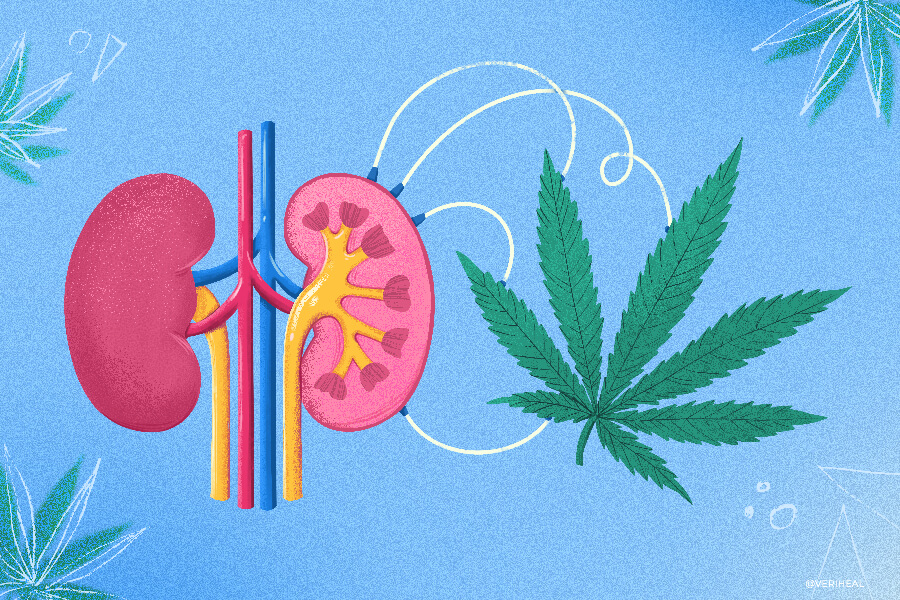No products in the cart.
Cannabis Use Associated With Lower Kidney Stone Risk
6 Nov 2023

Kidney stones are a common and painful condition that affects millions of people worldwide. Finding effective ways to prevent and treat kidney stones is a topic of ongoing research. Recently, there has been growing interest in the potential role of cannabis use in reducing the risk of kidney stones. Several studies have suggested an association between cannabis use and a lower risk of kidney stones in male users.
In this article, we will explore the findings of these studies, discuss the potential mechanisms behind this association, and highlight the importance of further research in this area.
Understanding Kidney Stones
Before diving into the association between cannabis use and kidney stone risk. It is essential to understand what kidney stones are and how they form. Kidney stones, also known as renal calculi, are hard deposits that form in the kidneys.
They can vary in size and composition, with the most common types being calcium oxalate and uric acid stones. Kidney stones can cause severe pain and discomfort, and if left untreated, they can lead to complications such as urinary tract infections and kidney damage.
The Role of Cannabis Use

Cannabis, also known as marijuana, has been used for centuries for its therapeutic properties. The plant contains various active compounds, including cannabinoids such as tetrahydrocannabinol (THC) and cannabidiol (CBD). These cannabinoids interact with the body’s endocannabinoid system, which plays a role in regulating various physiological processes, including pain perception, inflammation, and immune function.
The Study: Cannabis Use and Kidney Stone Risk
A recent study published in the journal Frontiers in Pharmacology examined the relationship between cannabis use and the risk of kidney stones. The study involved a representative sample of over 14,000 individuals between the ages of 20 and 59 from the National Health and Nutrition Examination Survey (NHANES) dataset. The researchers collected data on cannabis use and kidney stone history through self-report questionnaires.
After adjusting for potential confounding factors such as age, gender, race, education level. As well as, body mass index (BMI), the study found a significant inverse correlation between cannabis use and kidney stone risk in male users. The odds ratio (OR) for kidney stones in male cannabis users was 0.72, indicating a lower risk compared to non-users. Furthermore, the study observed a dose-dependent effect, with the lowest risk observed in men who consumed cannabis most frequently (OR = 0.62).
Potential Mechanisms
We do not yet fully understand the exact mechanisms that link cannabis use to a lower risk of kidney stones in male users. However, researchers have proposed several hypotheses based on the known effects of cannabinoids and the development of kidney stones.
One possible mechanism is the anti-inflammatory properties of cannabinoids. Inflammation plays a crucial role in the formation and progression of kidney stones. Cannabinoids, especially CBD, have been shown to exhibit anti-inflammatory effects, which may help reduce the risk of stone formation.
Additionally, cannabinoids have been found to have analgesic properties, which could alleviate the pain associated with kidney stones. By reducing pain, cannabis use may indirectly improve kidney stone outcomes by promoting better hydration and urine flow.
Furthermore, some studies have suggested that cannabinoids may affect the metabolism of minerals involved in kidney stone formation, such as calcium and oxalate. These minerals are the main constituents of calcium oxalate stones, the most common type of kidney stone. By modulating mineral metabolism, cannabinoids could potentially reduce the risk of stone formation.
Limitations and Future Research

While the findings of the study suggest a potential protective effect of cannabis use against kidney stone formation in males, it is important to interpret the results with caution due to several limitations. The study relied on self-report questionnaires, which may be subject to reporting bias. Additionally, the study was cross-sectional, meaning it can only establish an association and not causality.
Further research is needed to better understand the relationship between cannabis use and kidney stone risk. Longitudinal studies with larger sample sizes and more diverse populations would provide more robust evidence. Additionally, studies exploring the specific cannabinoids and their dosage, as well as potential interactions with other medications, are warranted.
Conclusion
The association between cannabis use and a lower risk of kidney stones in male users is an intriguing finding that warrants further investigation. While the exact mechanisms behind this association are not yet fully understood. The anti-inflammatory, analgesic, and potential effects on mineral metabolism of cannabinoids may play a role.
It is important to emphasize that the current evidence is limited and more research is needed to establish the potential benefits and risks of cannabis use. In relation to kidney stone risk. Individuals considering cannabis use for any reason should consult with their healthcare providers to make informed decisions.
As the legal and social attitudes towards cannabis continue to evolve. It is crucial to conduct rigorous scientific research to fully understand its potential therapeutic properties and risks. By doing so, we can provide evidence-based recommendations and improve patient care in the future.





